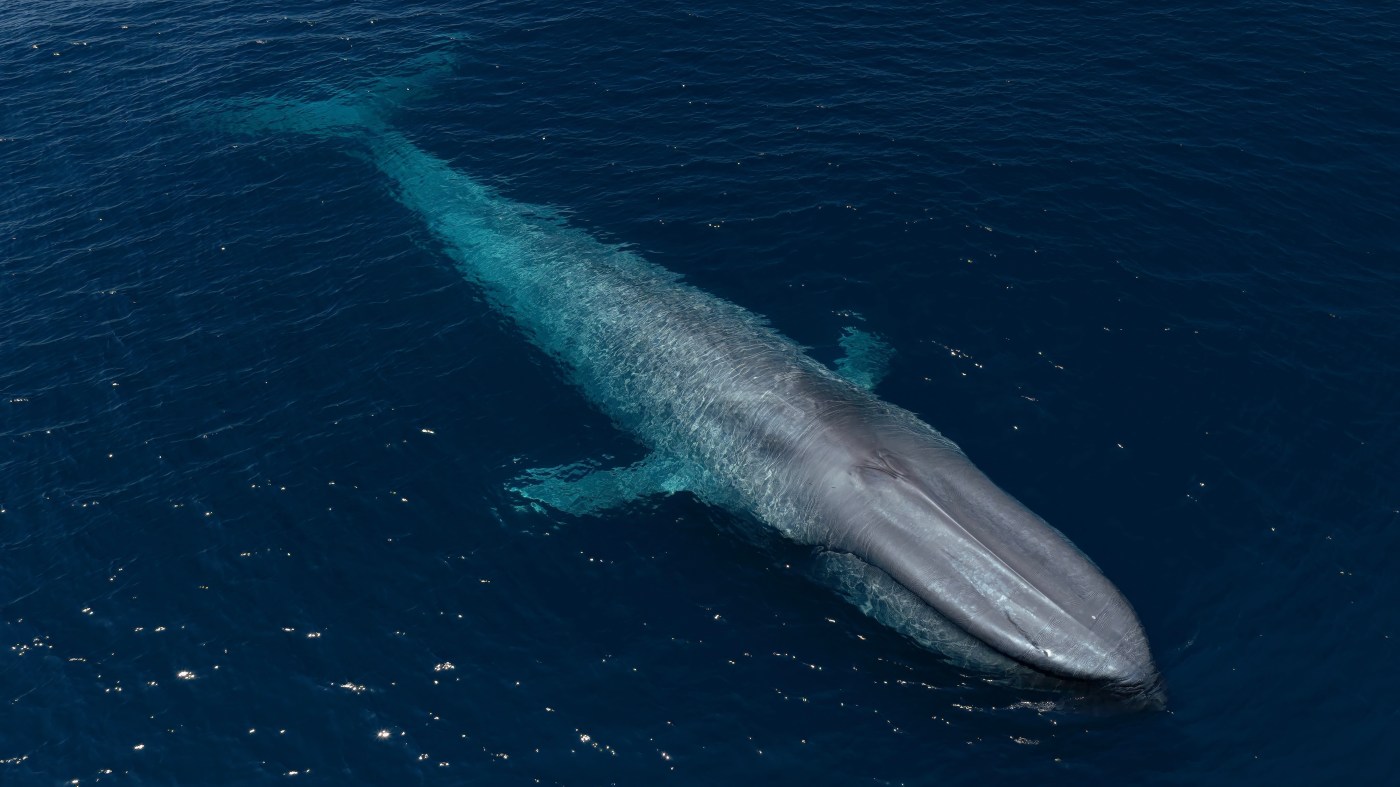Whale watching charter owners said they couldn’t remember a time over the last decade when blue whales, the earth’s largest mammals, showed up this late off Southern California.
In recent years, their anticipated appearance has been in May, and sometimes even in April, and some June and July sightings have been recorded. But August hasn’t been seen in recent memory.
But on Tuesday, Aug. 5, a Capt. Dave’s Dolphin and Whale Watching Safari charter spotted four blue whales feeding about 10 miles off Laguna Beach.
“We’ve never seen them this late,” said Gisele Anderson, co-owner of Capt. Dave’s, a charter that has operated out of the Dana Point Harbor for more than two decades. “It’s unprecedented that we’ve gone three months without them.”
The sighting was reported around 11 a.m. on Tuesday and Anderson, of San Juan Capistrano, said she jumped on the charter’s 2 p.m. trip to get a firsthand glimpse.
“We extended all our trips,” she said. “There’s no care if you’re running on schedule if blues are out there.”
When Anderson arrived, she said she watched as four blue whales scooped up mega-sized mouthfuls of krill, their food of choice. Krill are teeny, shrimp-sized crustaceans.
The behemoth mammals are filter feeders. They swallow mouthfuls of water and filter the liquid with their baleen plates to capture the tiny creatures. In one day, a blue can eat as many as 40 million krill, which equals about 8,000 pounds of crustaceans.
While Anderson and other charters in the area don’t recall blues showing up this late in recent years, John Calambokidis, a founder of Cascadia Research and an expert on blue whales, said they’ve been here late in the past. Lately, he said, their presence hasn’t been predictable at all. Blue whales typically feed off Mexico all the way north to the Gulf of Alaska.
“It is a little different than recent years, but in the late 2000s and early 2010s, we did encounter blue whales at that time of year,” he said, adding there is some indication the whales were feeding further north and moved down the coast.
They move in response to where the prey density is best. Earlier this summer, they were seen much further offshore of Mexico, as well as off Northern California and central Oregon. As part of his research, Calambokidis tags some of the whales, and said one made it down to Southern California.
“We know some of our whales have traveled south,” he said. “What whales want, we only partially understand. It has to do with not just how much prey, but also how concentrated it is and what size it is. Trying to understand all the interactions among those variables, I’ve done quite a bit of research, but I can’t say any of it comes up with a perfect explanation.”
Calambokidis said the recent cycle of toxic algae blooms and the associated environmental shifts do not appear to have had a direct influence on blue whales’ migration.
“All of those are being affected by broader oceanographic conditions,” he said. “But not in a way I can connect the dots on.”
While some whales, like humpbacks, return to some feeding grounds, Calambokidis said blue whales don’t operate in that way.
“They use their large size for efficiency; one year is different from the next to the next,” he said of his 40 years of studying the large mammals. “People want to attribute it to some broader trend in ocean climate, and that is possible, but normally we would see some variation from year to year and longer cyclical patterns.”
Ryan Lawler, who owns Newport Coastal Adventure, said he contacted Calambokidis after his sighting and learned about the whale that had been tagged farther north, which he said, leads him to believe the recent sightings are whales now traveling south.
Donna Kalez, who operates Dana Wharf Sportfishing and Whale Watching, said the charter operators all share when they spot the blue whales. She is hopeful the plentiful sightings this week might mean the blue whales return to a schedule where they show up more in the fall.
“For the last 10 years, we’ve had them pretty steady starting in May,” she said, adding that the blues are the most popular because of their size.
“They stay up longer, and everybody can get a glimpse when they come up. A gray whale will snorkel down, and it’s not as exciting,” she said. “This is exciting and I’m crossing my fingers the whales stay around.”








